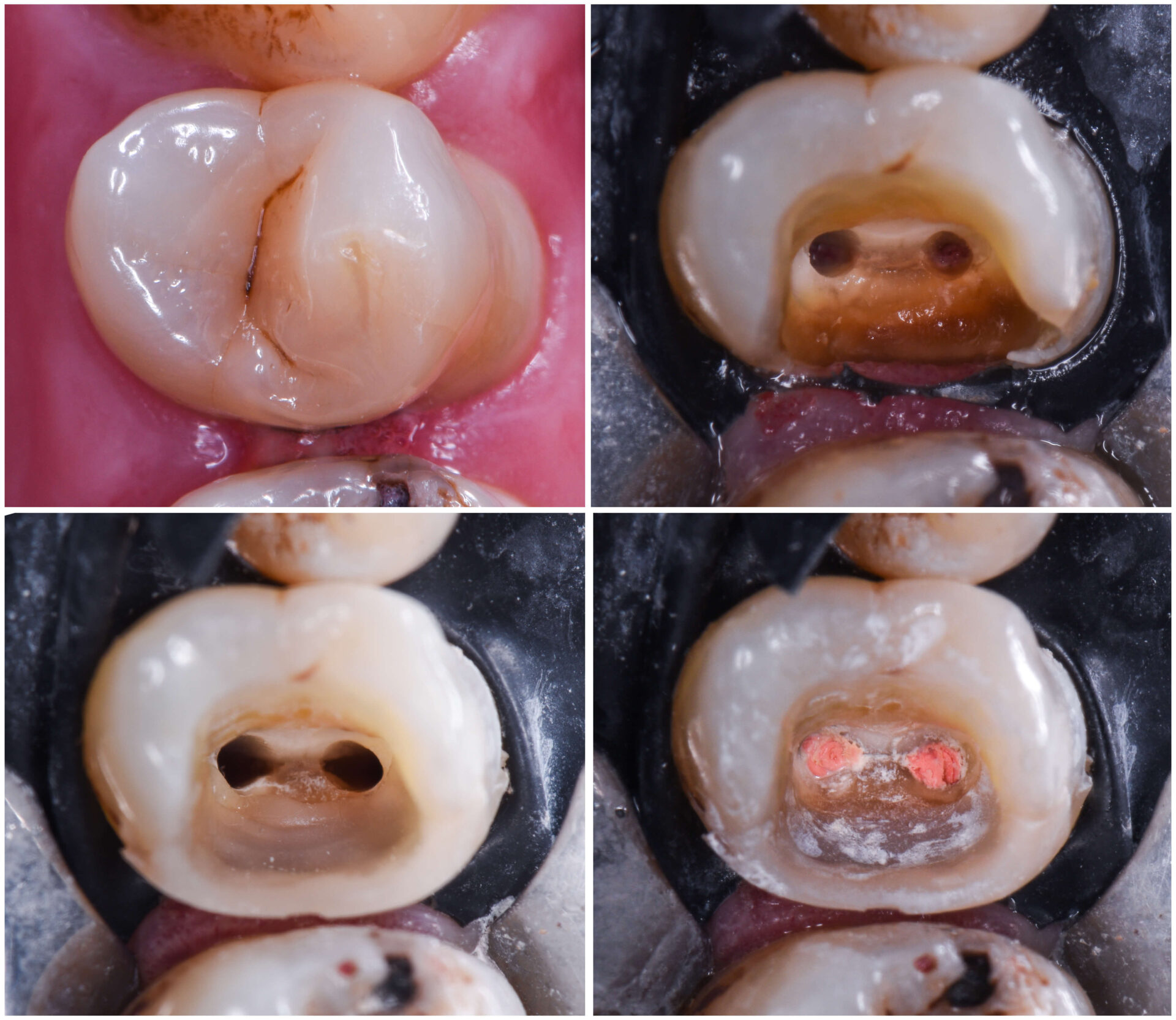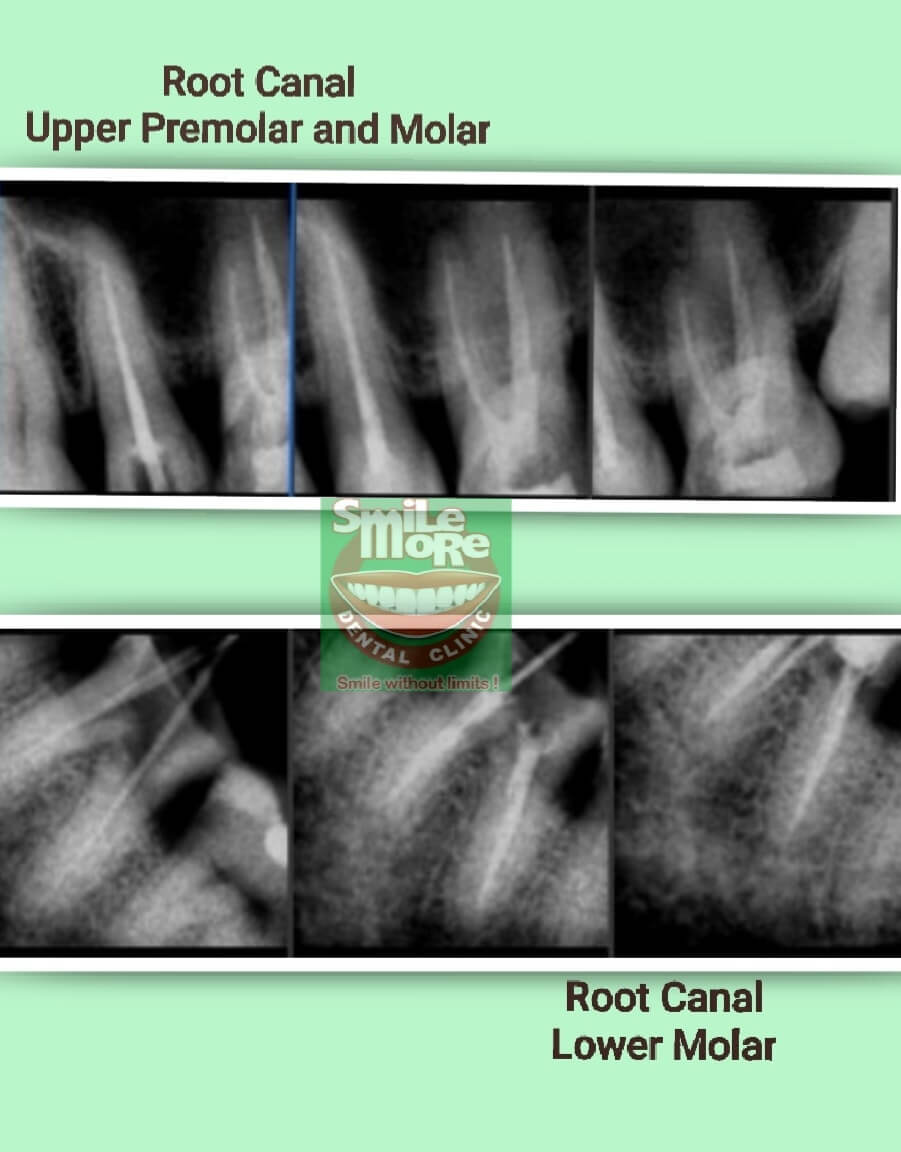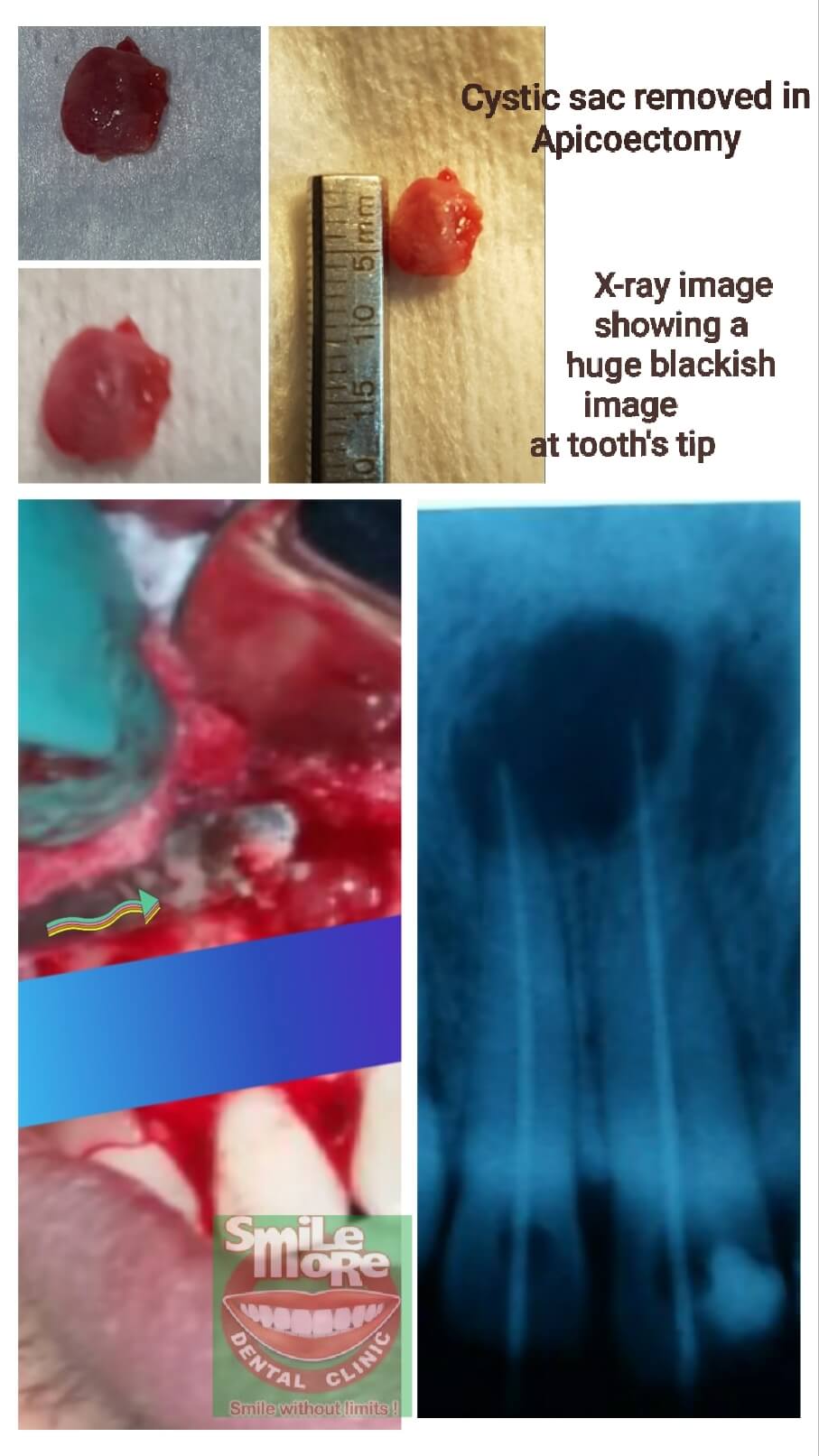This guide tells you everything about root canal treatment costs, the best clinic for tooth nerve care (Endodontic Treatment), and how it’s done in Manila, Philippines. Root canals help save your teeth, prevent tooth loss, and ensure your smile stays healthy. We’ll share all you need to know about the steps and costs of root canals in the Philippines, including other dental treatments related to root canals.
Understanding Root Canal Treatment in the Philippines
Before we get into it, let’s discuss why a root canal is necessary. It’s a special dentist treatment that can save your tooth from being pulled out. You need this kind of care when the inside of your tooth, known as the “dental pulp,” gets swollen, bothered, or sick.
Next, what does your dentist do? First, they carefully remove the bad (sick) dental pulp to keep your tooth healthy. Then, they clean the inside of your tooth well, just like cleaning up a room. Lastly, they seal it tightly to stop any more problems. They use safe materials that are good for your body, ensuring everything feels okay when done right. This “dental pulp therapy” is a true lifesaver for your tooth!
Getting to Know the Root Canal Procedure
Let’s make the root canal process easy to understand. Your dentist wants to make sure you don’t feel any pain. They’ll use local anesthesia to numb the area around your tooth, so you’re comfortable.
Once you’re all set, your dentist will make a small opening to get to the inside of your tooth. It’s like opening a secret door to reach the dental pulp chamber. They’ll carefully remove any bad pulp with special tools, like tiny cleaning instruments (root canal files) and a rotary Endodontic device. Then, they clean and shape the inside of your tooth.
After ensuring it’s all clean and free from infection, they fill it with a “biocompatible” or safe material for your body. Your dentist might even put a protective cover, called a dental crown, on your tooth. Root canal treatment helps stop tooth pain and keeps your tooth healthy.

Advantages of Root Canal Treatment
Let’s explore the benefits of Root Canal Procedure or Endodontics:
- Immediate Relief: It removes the infection, providing quick relief from toothache and discomfort caused by an infected tooth.
- Tooth Preservation: Root canal treatment preserves your natural tooth, maintaining your chewing and biting abilities without worrying about tooth loss.
- Prevents Tooth Shifting: Root canal therapy keeps neighboring teeth from shifting, ensuring your smile remains in great shape.
- Oral Health Improvement: It restores a healthy, confident smile and promotes oral health.
- Infection Removal: It eliminates the infection from the affected tooth, preventing it from spreading to other parts of your mouth.
- Efficient Chewing: With your treated tooth back in action, you can enjoy your favorite foods without discomfort or limitations.
- Natural Appearance: After endodontic treatment, your tooth looks and works naturally, enhancing your smile’s appearance.
- Long-Term Solution: Root canal-treated teeth can last a lifetime with proper care, offering a durable and cost-effective solution.

Addressing Common Misconceptions
Let’s clear up some misconceptions about root canal treatment :
- Pain: Modern methods and effective numbing make root canal treatment more comfortable than you might think. It’s hardly noticeable!
- Cancer: Root canal treatment is not related to cancer; it’s a baseless rumor. This safe procedure focuses solely on preserving your natural tooth and relieving pain.
- Tooth Removal: While some may think removing the tooth is quicker, preserving your natural tooth is valuable and usually the best choice. Root canal treatment is the way to go!
Understanding the Cost of a Root Canal in the Philippines
When it comes to the price tag of a root canal in the Philippines, several factors come into play that can sway the final cost. These factors include the complexity of the root canal procedure, the number of root canals per tooth, the tooth’s location within the mouth, and the potential need for additional treatments like dental crowns or implants.
Factors Affecting the Price of Root Canal Treatment
The cost of root canal care can vary based on how many roots your tooth has and where you live since prices can differ in various places. Also, how experienced your dentist is, the kind of materials they use, and their tools can change the cost. Front teeth usually have just one root, but back teeth, like molars, can have three or more, making the treatment more complex and costly. Knowing these factors helps you understand why the price of root canals can vary.

Factors Impacting the Cost of Root Canal Therapy
The place of your tooth in your mouth matters when figuring out how much a root canal will cost. Usually, it’s cheaper to fix the front teeth than the molars in the back because the rear teeth have more complicated roots.
If your dentist finds extra problems during your x-ray or checkup, like twisty or blocked roots or a pus-filled area called an abscess, the cost could increase. Also, if you need to go back to the dentist a few times, that can add to the cost too.
The skill and training of the dentist doing the root canal are also important for the price. Dentists with lots of experience use better and more precise tools. This can cost a bit more, but it often means you get a really good job done on your tooth.
Average Root Canal Cost in the Philippines
When it comes to root canal costs in the Philippines, you’re looking at a price range of about ₱ 8,000 to ₱ 25,000 per tooth. Keep in mind that this could vary, especially for more complex cases. This estimate is just for the root canal itself. It doesn’t include any extra fees for dental crowns or other treatments you might need after your root canal. So, planning extra for those additional steps to get your smile back in perfect shape is always good.

Insurance Coverage (Dental Healthcare) Considerations
Whether your insurance covers your root canal depends on your plan. Most of the time, insurance doesn’t pay for all of it, and you might need to chip in some money, too. It’s a good idea to talk to your insurance company to understand what they’ll cover and what you’ll need to pay yourself. This way, you’ll know exactly what to expect for your root canal costs.
Number of Dental Visits Required
How many times you need to visit the dentist for a root canal depends on your tooth and how it’s healing. Usually, it takes about one to three visits. This way, your path to dental health is smoother and quicker, with just a few dentist visits.

Where to Find Root Canal Treatment in the Philippines
Suppose you need a trustworthy dental clinic in the Philippines for a root canal or tooth-saving procedure. In that case, you’ve got plenty of great options. Choose a clinic known for its skill, lots of experience, and good care for its patients. In Manila, you’ll find some of the best dental clinics that offer excellent services, including root canals. These clinics are about keeping your smile healthy and saving your teeth with top-quality care.
Locating a Trustworthy Dental Clinic
When searching for a reliable dental clinic, it’s crucial to consider factors like the qualifications and experience of the dentists, the clinic’s reputation, and the quality of their facilities and equipment. Reading online reviews and seeking endorsements from family and friends can also be valuable in your quest for a dependable dental clinic.
Prominent Dental Clinics in the Philippines
Additionally, remember that numerous other well-regarded dental clinics in the Philippines offer root canal services, even if you have yet to see them on the popular dental clinic list. The usual word-of-mouth and referrals shall be your next trust point.
Booking Your Appointment
Now that you’ve picked us, setting up your appointment is super easy! Just get in touch with us here, send an SMS or a Viber message to +639053350118, or call us at (+632) 86429761. When you come in for your consultation, we’ll happily guide you through everything about tooth nerve treatment and taking care of an infected tooth. We’re here to make sure you get all the information you need and feel comfortable every step of the way.
We get that deciding to have a root canal might make you a bit nervous or have questions. But we’re here to make everything easy and comforting for you. Our goal is to make sure you know all about it, from the moment you book your appointment until your treatment is all done. So, if you have any worries or questions, just let us know – we’re here to help and support you every step of the way!
Exploring Alternatives to Root Canal Treatment
Sometimes, a root canal is not the best solution for your tooth problem. In those cases, it’s essential to consider other treatments that might be better for your teeth. We’re here to find the best way to care for your smile!
Tooth Extraction or Tooth Removal
If your tooth is badly hurt or the infection is too much, your dentist might suggest removing it. Removing the tooth or extracting it entirely can help solve the problem. This procedure can be a quick and effective way to fix severe dental issues.
Consideration for Tooth Replacement
Following a tooth extraction, several replacement options become available to fill the gap left by the missing tooth. These choices encompass Dental Implants, Dental Bridges, and removable dentures. Your dentist will review your case and recommend the best replacement. Dental implants, for instance, provide a durable and natural-looking tooth replacement solution.
Weighing the Pros and Cons
When choosing between a root canal and removing a tooth, it’s essential to consider the good and not-so-good points. A root canal procedure lets you keep your tooth and mouth working. But, removing a tooth (dental extraction) can help if you have a terrible infection or a tooth that’s too damaged. Talk with your dentist about what could happen and how it will affect you later. This way, you can make a brilliant choice for your teeth. Remember, it’s all about weighing the pros and cons of each option for your dental health.
Understanding the Root Canal Treatment Journey
Let’s look at what happens in a root canal treatment. This way, you’ll know exactly what to expect during this important dental journey.
The Initial Visit
During your initial checkup, your dentist will carefully examine your tooth’s condition and employ X-rays to gauge the extent of any infection. Suppose your dentist decides a root canal is needed. In that case, the first appointment may include cleaning the canals and using appropriate medication to remove any remaining infection.
Subsequent Visits
As you progress through the treatment, you’ll have subsequent visits to look forward to. These follow-up appointments will entail the removal of the temporary filling or dental crown, a meticulous round of canal cleaning and disinfection, and filling and sealing the canals with a permanent filling material.
Continuing Care and Aftercare
Your dental journey doesn’t end there after your root canal treatment. Your dentist might ask you to schedule follow-up visits to closely monitor your healing progress and ensure your tooth is recovering. Additionally, upholding excellent oral hygiene and regular dental checkups will prevent future dental concerns.
Addressing Complications and Extra Visits
In certain instances, complications like persistent infection or the need for additional procedures might necessitate extra visits to wrap up your root canal treatment. Your dentist will thoroughly assess your case and develop an adapted treatment plan tailored to your needs. Rest assured, your dental team is committed to your well-being throughout this journey!
Choosing the Right Restoration After Root Canal: Dental Crown or Dental Filling?
When restoring a tooth after a root canal, deciding between a dental crown or a dental filling is crucial for its long-term health and durability. A root canal can render your tooth more brittle over time, so you might need extra support to help it withstand the pressures of everyday use. When the sturdy portions of the tooth’s chewing surface have sustained damage, it becomes essential to provide this additional support. Let’s examine the options and understand why selecting the appropriate restoration method is vital for preserving your tooth.
The Role of Dental Crowns
Dental crowns are like sturdy shields for your teeth. They provide robust protection and reinforcement, making them an excellent choice for teeth with a root canal or Endodontic therapy. A dental crown can evenly distribute chewing forces, preventing further damage or fracture when a significantly weakened tooth is involved. It’s like giving your tooth a suit of armor, ensuring it remains intact and functional for years. With a dental crown, you can confidently bite into your favorite foods without worrying about potential cracks or breakages.
The Purpose of Dental Fillings
On the other hand, dental fillings are more like patchwork. They are suitable for smaller cavities or minor repairs. Still, they may not provide the comprehensive support needed for a tooth with a root canal. While dental fillings can be effective in many cases, they may not offer the same level of protection as a dental crown, especially for molars or teeth that endure substantial chewing forces. Without the reinforcement of a dental crown or a dowel post, a tooth treated with a root canal and filled alone may remain vulnerable to fractures, potentially leading to more extensive dental issues.
The Dowel Post: Strengthening from Within
When a tooth’s chewing surface is compromised or weakened, your dentist may recommend using a dowel post with a dental crown. This additional reinforcement provides internal support, anchoring the dental crown securely to the tooth’s structure. Think of it as a foundation that ensures the long-term stability and strength of the restored tooth. By choosing this approach, you can enjoy the benefits of a dental crown’s protective outer layer and the internal reinforcement of a dowel post, offering the best chance for your tooth’s continued health and functionality.
Selecting the Perfect Post-Root Canal Restoration
The appropriate restoration method is vital when restoring a tooth after a root canal. Dental crowns, with their robust protection, are often the preferred choice, especially for weakened or extensively damaged teeth. However, for cases where the tooth’s chewing surface requires added reinforcement, the combination of a dental crown and a dowel post can offer comprehensive support, ensuring the longevity of your restored tooth. Your dentist will carefully evaluate your needs and recommend the best restoration to keep your smile healthy and strong.
Conditions Requiring Apicoectomy: A Post-Root Canal Surgical Solution
Apicoectomy, or root-end surgery, becomes necessary when a previous root canal treatment fails to resolve an infection or dental issue. A patient needs this when a previously treated tooth continues to have problems after root canal therapy. Let’s clarify what apicoectomy is and when it’s necessary.
Purpose of Apicoectomy: Apicoectomy treats persistent infections, abscesses, or issues related to the tip of the tooth’s root. In root canal therapy, the dentist removes the infected or deteriorated pulp inside the tooth and cleans and seals the root canals. However, in some cases, bacteria may persist in the tiny accessory canals or the tip of the tooth’s root, leading to ongoing infection and discomfort. Apicoectomy aims to remove the infected tissue and seal the root’s end to prevent further infection.

Indications for Apicoectomy: Typically, dentists require apicoectomy in the following situations:
Persistent Infections: When a tooth continues to exhibit signs of infection or disease, such as pain, swelling, gum boil, or drainage, despite a previous root canal treatment.
Hidden Canals: Sometimes, the tooth’s root may have complex canal systems that were not thoroughly cleaned and sealed during the initial root canal treatment. An apicoectomy can address these accessory canals.
Damaged Roots: If the tip of a tooth’s root is fractured or damaged, it may require surgical treatment to save the tooth.
Calcified Canals: In cases where the canals inside the tooth become calcified or blocked, making it impossible to treat through a standard root canal procedure, apicoectomy may be necessary.
The Apicoectomy Procedure: During the apicoectomy procedure, the dentist or endodontist makes a tiny incision in the gum tissue near the affected tooth, exposing the underlying bone and root tip. The dentist gets rid of infected tissue and any damaged root tip, cleans and shapes the root end, and seals it to prevent further infection. They then suture the gum tissue back into place, and over time, it heals naturally.
Aftercare and Recovery: Patients may experience some discomfort and swelling after an apicoectomy, but this typically subsides within a few days. Dentists may prescribe pain medications and antibiotics to manage pain and prevent infection. It’s essential to follow post-operative care instructions carefully, including maintaining good oral hygiene. Most patients can proceed to their regular activities shortly after the procedure.
In summary, dentists perform apicoectomy as a surgical procedure to address persistent infections, hidden canals, damaged roots, or calcified canals that standard root canal therapy cannot effectively treat. It is a valuable option to save a tooth that might need extraction. Patients experiencing ongoing dental issues despite previous root canal treatment should consult their dentist or endodontist to determine if apicoectomy is the right course of action to preserve their oral health.
Root Canal Treatment: Ensuring Your Smile’s Bright Tomorrow
Now that you’ve read this blog, you know much more about caring for your teeth. Getting a root canal in the Philippines can help you feel better without any pain. It’s a great way to keep your smile looking good and your mouth healthy for a long time. It’s all about maintaining your teeth healthy for a brighter future. Don’t wait – pick the right dental clinic for this tooth-saving treatment. You’ll be on your way to a healthier, happier you, with a big, bright smile as the best part.
Preserve Your Tooth with Root Canal Therapy
Ready to protect your tooth with Root Canal Therapy? Contact Smile More Dental Clinic to book your consultation or learn all about our top-notch root canal services in the Philippines. Our skilled dental team is ready to answer your questions and give you the fantastic care you deserve. We will help improve your dental health and keep you smiling with confidence.
Disclaimer: This article offers general information about root canal treatment in the Philippines. It’s not a replacement for expert dental advice. Please consult a qualified dentist for personalized guidance on your dental health.


